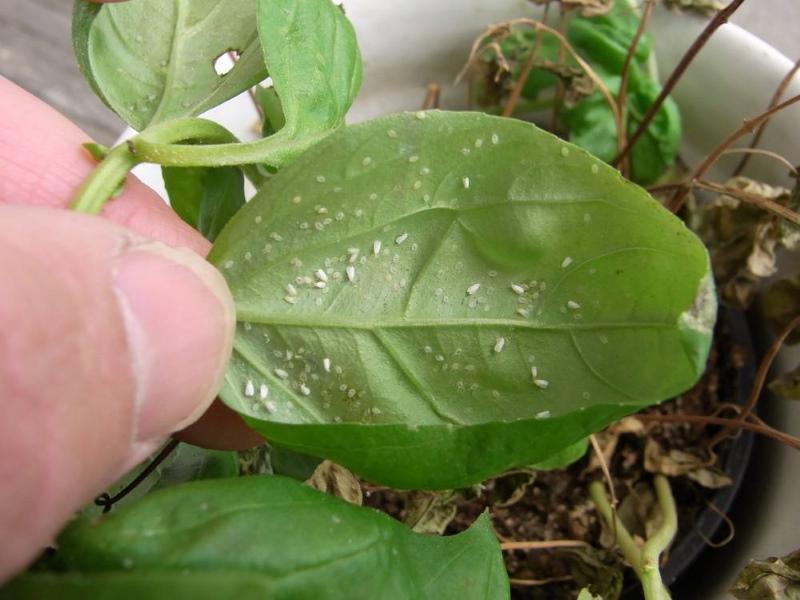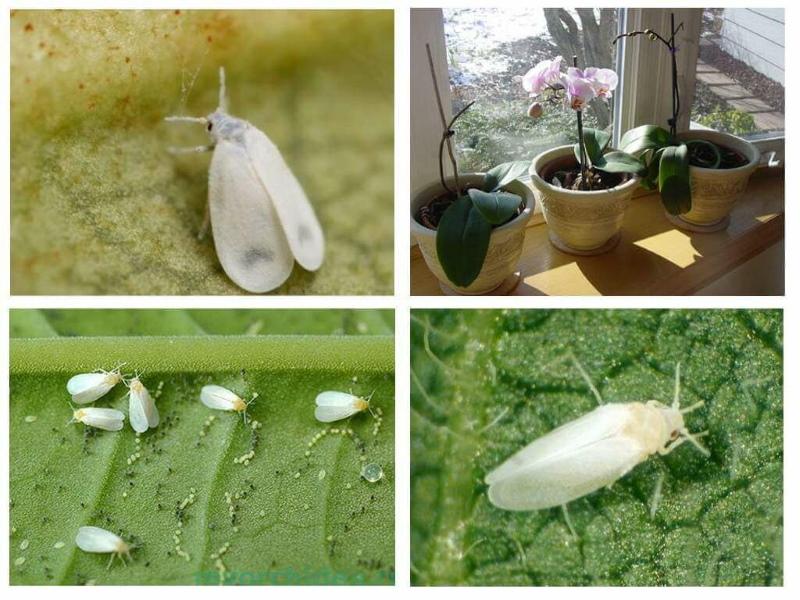Attention, danger - whitefly on indoor plants, how to deal with a tenacious pest
 Perhaps one of the most tenacious flower pests is the whitefly. It sucks the juices from leaves and buds, while at the same time it is possible to destroy only adults at a time, because the larvae are protected by a dense cocoon. What is this insect, how to understand that it is the whitefly that has appeared on indoor plants, how to deal with it in order to get rid of pests forever?
Perhaps one of the most tenacious flower pests is the whitefly. It sucks the juices from leaves and buds, while at the same time it is possible to destroy only adults at a time, because the larvae are protected by a dense cocoon. What is this insect, how to understand that it is the whitefly that has appeared on indoor plants, how to deal with it in order to get rid of pests forever?
What does a whitefly look like?

Outwardly, whiteflies resemble white butterflies, only very small. The largest males - the length of their body reaches as much as 2.5 mm, while the females are 2 times smaller. The entire body of insects is covered with waxy pollen, which is also on the porches.
Whiteflies live mainly on the back of the leaves, where they lay eggs, almost three hundred per month. Therefore, it is not possible to destroy them with a single processing. The next day, new larvae hatch. They are gray, and immediately viable - they actively crawl over the leaves and suck the juice. And in just 2 weeks they turn into adults.
Symptoms of plant damage by whitefly
 You can understand that white butterflies-pests have started in indoor flowers by the following signs:
You can understand that white butterflies-pests have started in indoor flowers by the following signs:
- when a plant touches it, insects immediately fly up;
- sticky shiny spots appear on the surface of the leaves;
- the foliage on the underside is covered with many eggs and larvae;
- the flower begins to lag behind in growth, the leaves curl, turn yellow and crumble.
The danger of the whitefly is not only that it multiplies rapidly. Thanks to their wings, insects in a short time infect all plants in the vicinity.
Whitefly on indoor plants - how to deal
 Flowers affected by pests must be urgently isolated and rearranged to a cooler place. Dry air and cold will stop the development of larvae and contribute to the death of adult parasites.
Flowers affected by pests must be urgently isolated and rearranged to a cooler place. Dry air and cold will stop the development of larvae and contribute to the death of adult parasites.
In the initial stages, you can try to get rid of the whitefly with folk remedies by spraying the plants:
- garlic solution;
- shag infusion;
- soapy water.
However, it should be understood that these agents will destroy only adult insects. They are powerless against larvae and eggs, so you need to repeat the procedure after 5 days, when the younger generation matures. And do this until all the parasites disappear.
With a large scale of damage, it makes sense to resort to chemicals: Aktara, Confidor, Akarin, Iskra.